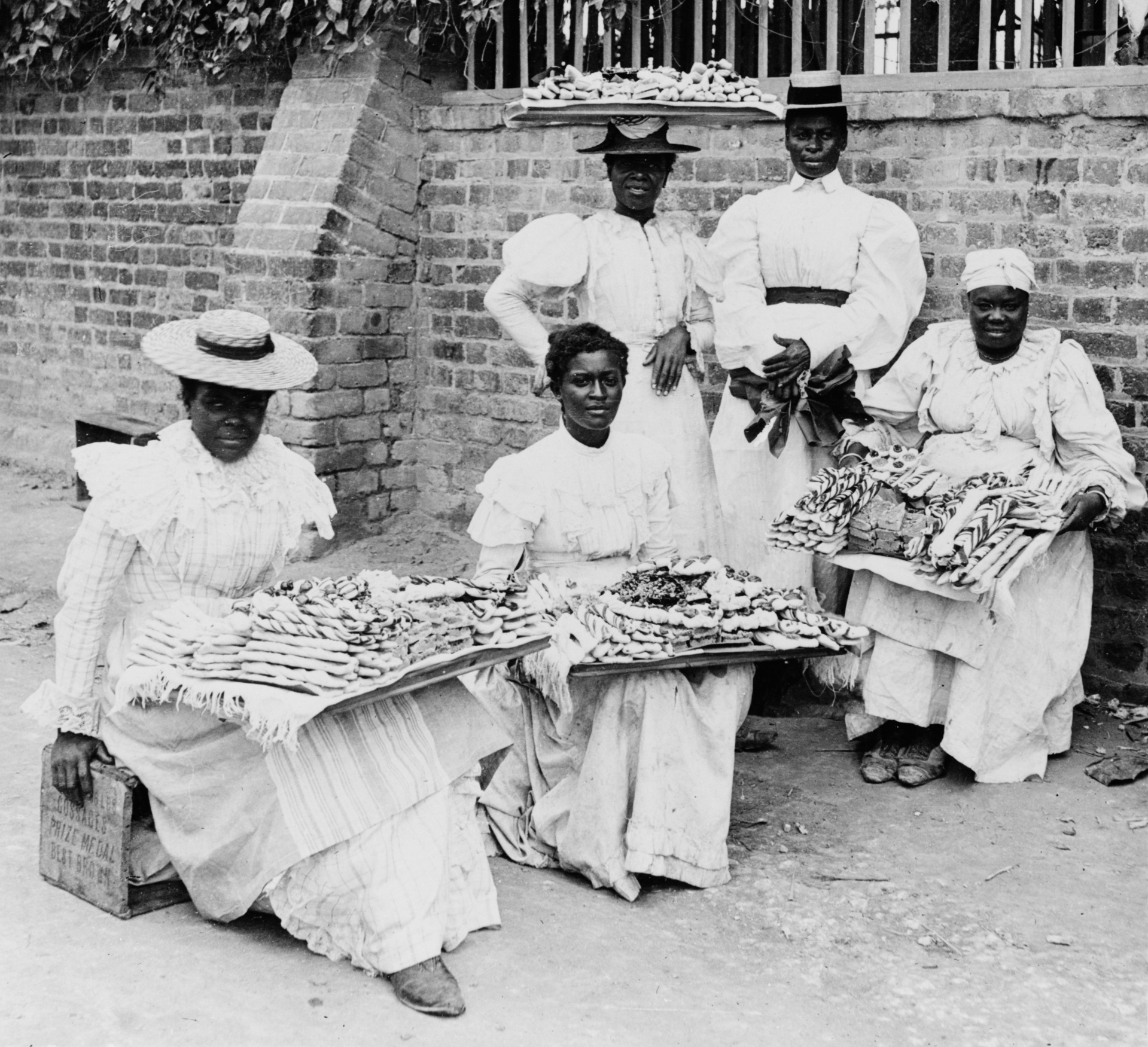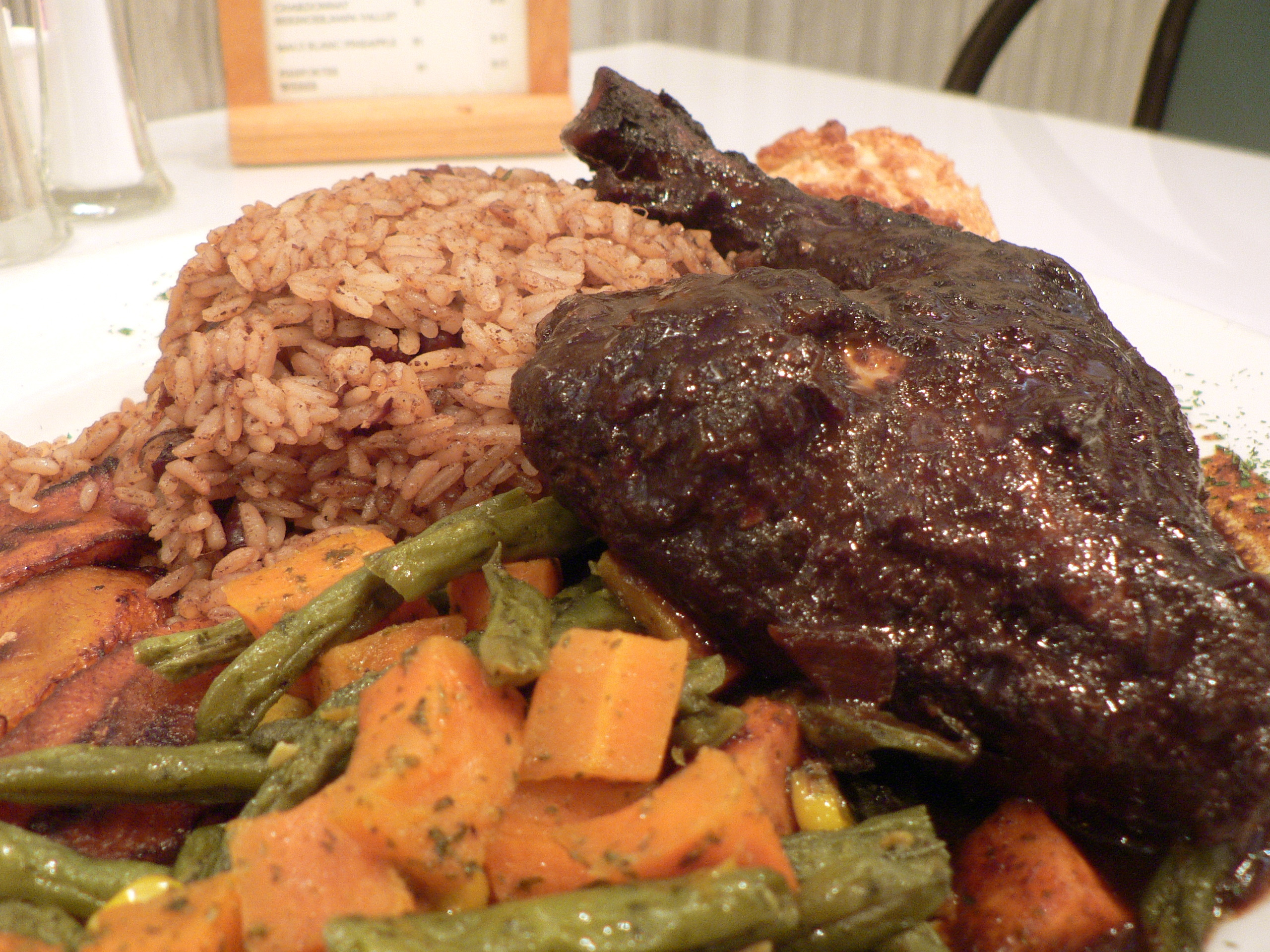|
Coco Bread
Coco bread is eaten in Jamaica and other areas of the Caribbean. The bread contains some coconut milk, and is starchy and slightly sweet in taste. It is often split in half and stuffed with a Jamaican patty to form a sandwich in the same manner as a pasty barm. Jamaican coco bread.jpg, Jamaican coco bread from a Los Angeles bakery. History There is no certainty regarding when coco bread was first made and by whom; however, locals believe that coco bread was a product of enslaved Africans who worked on Caribbean sugar plantations. However, since then it has been popular within the Caribbean community. See also * Bammy * Bulla cakes * Dumplings * Festivals * Hard dough bread * Caribbean cuisine * List of Jamaican dishes This is a list of Jamaican dishes and foods. Jamaican cuisine includes a mixture of cooking techniques, flavors, spices and influences from the Indigenous peoples, indigenous people on the island of Jamaica, and the Ethnic groups of Africa, Afric ... Ref ... [...More Info...] [...Related Items...] OR: [Wikipedia] [Google] [Baidu] |
Jamaican Beef Patty
A Jamaican patty is a semicircular pastry that contains various fillings and spices baked inside a flaky shell, often tinted golden yellow with an egg yolk mixture or turmeric. It is made like a turnover as it is formed by folding over the circular dough cutout over the chosen filling, but is more savoury and filled with ground meat. As its name suggests, it is commonly found in Jamaica, and is also eaten in other areas of the Caribbean, such as the Caribbean coast of Nicaragua, Panama and Costa Rica. It is traditionally filled with seasoned ground beef, but fillings can include chicken, pork, lamb, vegetables, shrimp, lobster, fish, soy, ackee, mixed vegetables or cheese. In non-Jamaican-based restaurants' attempt to appeal to certain audiences, the patty has extended its composition to include low-fat, whole wheat crusts. In Jamaica, the patty is often eaten as a full meal, especially when paired with coco bread. It can also be made as bite-sized portions called cocktail p ... [...More Info...] [...Related Items...] OR: [Wikipedia] [Google] [Baidu] |
Plantation
A plantation is an agricultural estate, generally centered on a plantation house, meant for farming that specializes in cash crops, usually mainly planted with a single crop, with perhaps ancillary areas for vegetables for eating and so on. The crops that are grown include cotton, coffee, tea, cocoa, sugar cane, opium, sisal, oil seeds, oil palms, fruits, rubber trees and forest trees. Protectionist policies and natural comparative advantage have sometimes contributed to determining where plantations are located. In modern use the term is usually taken to refer only to large-scale estates, but in earlier periods, before about 1800, it was the usual term for a farm of any size in the southern parts of British North America, with, as Noah Webster noted, "farm" becoming the usual term from about Maryland northwards. It was used in most British colonies, but very rarely in the United Kingdom itself in this sense. There, as also in America, it was used mainly for tree plantations, a ... [...More Info...] [...Related Items...] OR: [Wikipedia] [Google] [Baidu] |
Jamaican Cuisine
Jamaican cuisine includes a mixture of cooking techniques, flavours and spices influenced by Amerindian cuisine, Amerindian, Cuisine of Africa, African, Irish cuisine, Irish, English cuisine, English, French cuisine, French, Portuguese cuisine, Portuguese, Spanish cuisine, Spanish, Indian cuisine, Indian, Chinese cuisine, Chinese and Arab cuisine, Middle Eastern people who have inhabited the island. It is also influenced by the crops introduced into the island from tropical Southeast Asia, many of which are now grown locally. A wide variety of seafood, tropical fruits and meats are available. Some Jamaican dishes are variations on cuisines brought to the island from elsewhere. These are often modified to incorporate local produce and spices. Others are novel or Fusion cuisine, fusion and have developed locally. Popular Jamaican dishes include curry goat, fried dumplings, ackee and saltfish. Jamaican patty, Jamaican patties along with various pastries, breads and beverages are also p ... [...More Info...] [...Related Items...] OR: [Wikipedia] [Google] [Baidu] |
List Of Jamaican Dishes
This is a list of Jamaican dishes and foods. Jamaican cuisine includes a mixture of cooking techniques, flavors, spices and influences from the Indigenous peoples, indigenous people on the island of Jamaica, and the Ethnic groups of Africa, Africans who have inhabited the island. It is also influenced by the crops introduced into the island from tropical West Africa and Southeast Asia, which are now grown locally. Jamaican cuisine includes dishes from the different cultures brought to the island, while other dishes are novel or a fusion cuisine, fusion of techniques and traditions. A wide variety of seafood, tropical fruits, and meats are available. Jamaican dishes and foods * Ackee and saltfish, made from the local fruit ackee and dried and salted cod (saltfish). This is the national dish of Jamaica. It is often served with bread, Jamaican fried dumplings, bammy (cassava bread) or roasted breadfruit. * Bammy, a kind of savoury cassava bread * Breadfruit, served roasted, f ... [...More Info...] [...Related Items...] OR: [Wikipedia] [Google] [Baidu] |
Hard Dough Bread
Hard dough bread, also called hardo bread, is a Caribbean cuisine bread similar to the Pullman loaf or pain de mie, although hard dough bread tends to be sweeter. The dough consists of flour, water, yeast, salt and sugar. Additional ingredients such as treacle, molasses, and vegetable shortening can be used. It typically has a dense consistency and is typically brushed with sugared water before baking. It is a staple food in Jamaican households. Hard dough bread loaves are usually rectangular shaped and can be bought already sliced or unsliced. Most loaves are wrapped in plastic when bought. History The bread originated from Chinese immigrants who brought the recipe to Jamaica. Usage Hard dough bread is used much the same as a Pullman loaf: as a vehicle for spreads such as butter, cheese or jam; for dipping into liquids, a common one being hot chocolate; or to make sandwiches. It is also commonly paired with various kinds of porridge (such as cornmeal, green banana, peanut e ... [...More Info...] [...Related Items...] OR: [Wikipedia] [Google] [Baidu] |
Festival (dumpling)
The festivals or Jamaican festivals are a kind of deep-fried bread, typical of Jamaican cuisine. Despite its slightly sweet taste, is served as a side dish to dishes such as fried fish, escovitch, escovitch fish or jerk chicken. It is a dough made with wheat flour, Cornmeal, baking powder, salt, milk powder unflavored milk or evaporated milk, sugar and water, then fried in a neutral cooking oil and served hot. The finished festival should be crispy on the outside while soft and fluffy on the inside. See also * Bulla cake * Bammy * Coco bread * Hard dough bread * Jamaican cuisine * List of Jamaican dishes References Quick breads Jamaican breads Fried dough Milk dishes {{Jamaica-cuisine-stub ... [...More Info...] [...Related Items...] OR: [Wikipedia] [Google] [Baidu] |
Dumpling
Dumpling is a broad class of dishes that consist of pieces of dough (made from a variety of starch sources), oftentimes wrapped around a filling. The dough can be based on bread, flour, buckwheat or potatoes, and may be filled with meat, fish, tofu, cheese, vegetables, fruits or sweets. Dumplings may be prepared using a variety of methods, including baking, boiling, frying, simmering or steaming and are found in many world cuisines. In the United States in May 2015 National Day Calendar listed National Dumpling Day as held on September 26, annually. African Banku and kenkey are defined as dumplings in that they are starchy balls of dough that are steamed. They are formed from fermented cornmeal. Banku is boiled and requires continuous kneading, while kenkey is partly boiled then finished by steaming in corn or banana leaves. Tihlo—prepared from roasted barley flour—originated in the Tigray region of Ethiopia and is now very popular in Amhara as well and spreading ... [...More Info...] [...Related Items...] OR: [Wikipedia] [Google] [Baidu] |
Bulla Cakes
Bulla cake, usually referred to as bulla, is a rich Jamaican cake made with molassesGrace CameroBulla pear & A likely pair September 25, 2003 Jamaica Gleaner and spiced with ginger and nutmeg, sometimes dark-colored and other times light-colored. Bulla are small loaves that are flat and round. They are inexpensive and easy to make using molasses, flour and baking soda. Bulla is traditionally a popular treat for schoolchildren.Rebecca TortellSweet & dandy - The history of Jamaican sweets February 7, 2009 The Gleaner (Jamaica) It is usually eaten with cheese, butter or avocado.EXOTIC DELIGHTS Here are some of the more popul ... [...More Info...] [...Related Items...] OR: [Wikipedia] [Google] [Baidu] |
Bammy
Bammy is a traditional Jamaican cassava flatbread descended from the simple flatbread eaten by the Arawaks, Jamaica's original inhabitants. Today, it is produced in many rural communities and sold in stores and by street vendors in Jamaica and abroad. Bammies have been consumed since pre-Columbian times and is believed to have originated with the native Arawak people. For centuries, it was the bread staple for rural Jamaicans until the cheaper, imported wheat flour breads became popular in the post-World War II era. In the 1990s, the United Nations and the Jamaican government established a program to revive bammy production and to market it as a modern, convenient food product. Bammy is made from bitter cassava (also called yuca and manioc in other American cultures). Traditionally, the cassava is grated and placed in a press bag (woven with thatch leaves) and placed in an outdoor press where heavy stones are loaded on. Once completely drained, but still a bit moist, the cassav ... [...More Info...] [...Related Items...] OR: [Wikipedia] [Google] [Baidu] |
Los Angeles
Los Angeles ( ; es, Los Ángeles, link=no , ), often referred to by its initials L.A., is the largest city in the state of California and the second most populous city in the United States after New York City, as well as one of the world's most populous megacities. Los Angeles is the commercial, financial, and cultural center of Southern California. With a population of roughly 3.9 million residents within the city limits , Los Angeles is known for its Mediterranean climate, ethnic and cultural diversity, being the home of the Hollywood film industry, and its sprawling metropolitan area. The city of Los Angeles lies in a basin in Southern California adjacent to the Pacific Ocean in the west and extending through the Santa Monica Mountains and north into the San Fernando Valley, with the city bordering the San Gabriel Valley to it's east. It covers about , and is the county seat of Los Angeles County, which is the most populous county in the United States with an estim ... [...More Info...] [...Related Items...] OR: [Wikipedia] [Google] [Baidu] |
Jamaica
Jamaica (; ) is an island country situated in the Caribbean Sea. Spanning in area, it is the third-largest island of the Greater Antilles and the Caribbean (after Cuba and Hispaniola). Jamaica lies about south of Cuba, and west of Hispaniola (the island containing the countries of Haiti and the Dominican Republic); the British Overseas Territory of the Cayman Islands lies some to the north-west. Originally inhabited by the indigenous Taíno peoples, the island came under Spanish rule following the arrival of Christopher Columbus in 1494. Many of the indigenous people either were killed or died of diseases, after which the Spanish brought large numbers of African slaves to Jamaica as labourers. The island remained a possession of Spain until 1655, when England (later Great Britain) conquered it, renaming it ''Jamaica''. Under British colonial rule Jamaica became a leading sugar exporter, with a plantation economy dependent on the African slaves and later their des ... [...More Info...] [...Related Items...] OR: [Wikipedia] [Google] [Baidu] |




01.jpg)

